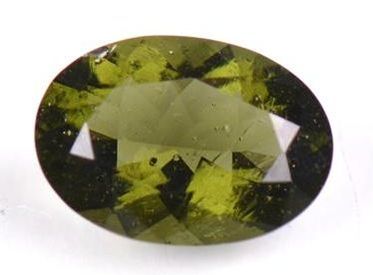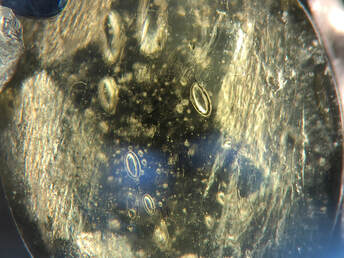MOLDAVITE
|
Species: Moldavite
Mohs Hardness: 5.5 to 7 out of 10 Color: Medium to dark yellowish to grayish green, usually low in saturation RI: 1.490 (+0.020 / -0.010) Birefringence: None SR/DR/AGG: SR, commonly with ADR Pleochroism: None Spectrum: Not diagnostic Fluorescence: Generally inert SG: 2.36 (+/- 0.04) Routine Treatments: None |




